
All categories
Featured selections
Trade Assurance
Buyer Central
Help Center
Get the app
Become a supplier

(1555 products available)










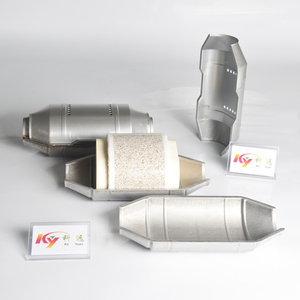






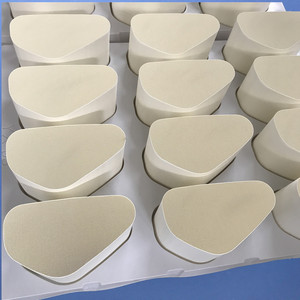






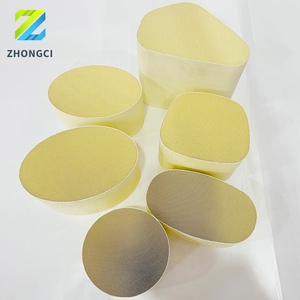







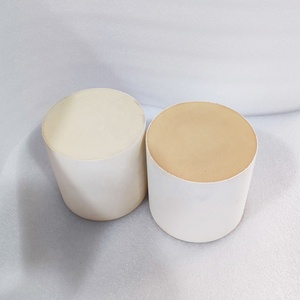






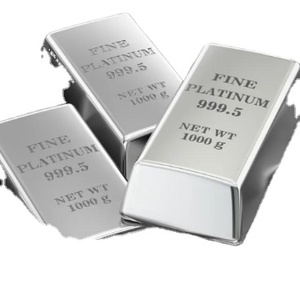
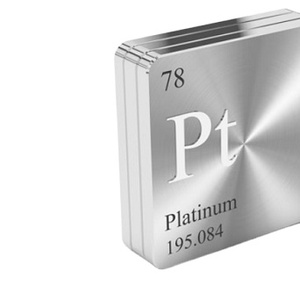


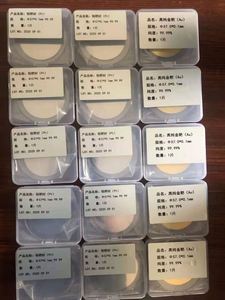

Ceramic monolith catalyzer type refers to the type of catalytic converter that uses a ceramic monolith as a substrate to support the active catalyst material. These monoliths are typically made from cordierite or other heat-resistant ceramic materials and are structured in thin, hexagonal channels to create a large surface area for the catalyst to coat upon, increasing efficiency. Common types of ceramic catalyst monoliths include:
Cordierite Monoliths
Cordierite monoliths are the most widely used substrates for catalytic converters. Cordierite is a type of ceramic material that is mainly composed of the minerals cordierite, kaolinite, and dolomite. These monoliths have a good balance of thermal stability, low thermal expansion, and chemical resistance. Their characteristic honeycomb structure, with its narrow but numerous channel openings, provides a large and efficient area for the catalyst coating to carry out the reactions.
Alumina Monoliths
Alumina monoliths are less commonly used than cordierite but can be suitable for applications requiring higher thermal stability and chemical resistance. These monoliths are made from aluminum oxide ceramics and are often used in extreme environments or high-performance catalytic converters. Alumina's higher stability makes these monoliths ideal for use in vehicles operating under excessively high temperatures and in more aggressive chemical conditions.
Silicon Carbide (SiC) Monoliths
SiC monoliths are more durable and more thermally stable than cordierite. Silicon carbide monoliths are used in applications requiring high levels of durability, thermal shock resistance, and long-term performance under extreme conditions (e.g. high temperatures, aggressive chemical environments). This is because the SiC material provides such a strong and resilient core. Also, SiC monoliths support catalyst formulations containing metals like platinum, palladium, and rhodium, known to withstand high heat without degrading.
Custom-Designed Monoliths
Sometimes, manufacturers develop specific channel geometries, pore sizes, or surface area configurations tailored to meet the specific needs of their clients. Manufacturers design these custom monoliths based on client needs, the chemicals involved, or space constraints.
Thermal Resistance
Ceramic catalyzer monoliths are produced with premium-quality materials that can withstand extremely high temperatures. Therefore, they are not very responsive to temperature changes; hence, they are ideal for use in automotive exhaust systems that have hot, gaseous emissions. They can facilitate chemical reactions at these high temperatures, which would otherwise be impossible or highly inefficient.
Chemical Resistance
The ceramic materials used to produce the catalytic converters have high durability and longevity. They are, therefore, not very vulnerable to degradation by the toxic and harsh chemicals that pass through an automotive catalytic converter, like sulfur compounds, carbon monoxide, hydrocarbons, and nitrogen oxides (NOx). This resistance makes them maintain optimal performance levels over time.
Low Thermal Expansion
Ceramic monoliths have low coefficients of thermal expansion. This means they do not very easily change shape or size when heated or cooled. Such a characteristic is vital in applications where the temperature may fluctuate a lot because it ensures that the monolith maintains its structural integrity and stable catalytic activity even in extreme temperature variations.
Honeycomb Structure and High Surface Area
The ceramic catalyst support has a typical honeycomb structure with narrow, numerous channels running through it. This design provides a large surface area for the catalyst. The high surface area allows the catalyst to be more efficient by giving the exhaust gases more area to come into contact with it, increasing the likelihood of chemical reactions occurring and thereby converting more pollutants.
Lightweight and Compact
Ceramic monoliths are designed to be lightweight and compact. They combine their thermal and chemical resistance and the low thermal expansion property to be so. This makes them easy to install in the exhaust systems of automobiles without adding too much extra weight for the engineers to work with, especially within the limited spaces available in modern vehicles, and not compromising on functionality.
Automotive Catalytic Converters
The automotive industry is the major user of catalytic monoliths. As a part of catalytic converters, ceramic monoliths help reduce the emission of harmful pollutants such as carbon monoxide, nitrogen oxides, and unburned hydrocarbons from the exhaust gases of internal combustion engine vehicles. Their efficient honeycomb structure provides a large surface area for the exhaust gases to interact with the catalyst, facilitating these emissions' conversion into less harmful substances.
Industrial Gas Treatment Systems
Ceramic monoliths are used in fixed-bed reactors in chemical plants and refineries to treat process gases. In these systems, the monoliths support catalysts used to convert harmful gases into valuable chemicals or to reduce emissions before gases are released into the atmosphere. Their uniform structure allows for efficient mass transfer and reaction, improving the overall performance of these gas treatment systems.
Stationary Emission Controls
Industries like power plants, manufacturing facilities, and refineries use ceramic monoliths in their emission control systems to comply with environmental regulations. These monoliths are integrated into selective catalytic reduction (SCR) systems to reduce nitrogen oxide emissions or into other types of post-combustion treatment systems. The monoliths help facilitate the catalytic reactions that reduce the pollutants emitted from burning fossil fuels.
Portable Emission Testing Equipment
Ceramic monoliths are also used in portable emission testing systems to analyze the concentration of various pollutants in emissions. For instance, due to their compact and efficient design, the monoliths provide a quick and accurate way to collect and sample emissions, which helps operators identify compliance levels with environmental regulations and make necessary adjustments to their processes.
Gas Sensors
Gas sensors used in many applications, including environmental monitoring and industrial process control and detection, also utilize ceramic monoliths. In this case, the monoliths support catalytic reactions that allow the sensors to detect and measure concentration levels of particular gases. Due to the wide, open channels in the monoliths facilitating easy gas flow, these sensors become very sensitive and thus enable them to give accurate emissions readings.
Substrate Material
There are several kinds of materials that make up a ceramic monolith, like cordierite, alumina, and silicon carbide. Each of them comes with their unique benefits. For instance, cordierite offers excellent thermal shock resistance and low thermal expansion, which makes it fitting for automotive applications, while silicon carbide provides superior strength and can survive in harsh chemical environments because it is more thermally stable.
Channel Size and Density
The channel size and density determine the monolith's flow characteristics and surface area. This, in turn, affects how efficiently it will let exhaust or gas pass through while supporting the catalyst. One has to ensure that the chosen size and density are compatible with the target application and the engine's requirements so that the ones with too small a channel do not cause back pressure or ones with too large a channel do not reduce the conversion efficiency.
Mechanical Strength
One should evaluate the strength of the ceramic monolith, as it will ensure durability when subjected to the extremely high demands of an operating environment. Factors that contribute to strength therefore include the choice of substrate material (e.g. silicon carbide has superior mechanical strength) and the design of the monolith (e.g. honeycomb structures with thin walls). One must consult manufacturers for data relating to low-backert pressure and thermal cycling to ascertain the strength of the monolith.
Dimensional Compatibility
One should check the dimensions of the chosen monolith and make sure they are compatible with their catalytic converter or reactor. The monolith should fit neatly without any gaps or spaces, as these can disrupt gas flow and lead to uneven concentration of the catalyst. One should take precise measurements and compare them with standard monolith sizes, or they can go for a monolith custom-made to their specified dimensional requirements.
Application-Specific Design
There are specially designed monoliths for specific applications. For example, some are made for automotive use, where thermal shock and back pressure are the key considerations, and others for industrial processes, where chemical resistance and catalysis are the main focus. Select a monolith designed to optimize performance for the intended application to ensure the best possible outcome.
Cost and Quality
Some ceramic monoliths can be relatively cheap, while others are undoubtedly expensive, depending on the materials used, the complexity of the design, and how it is intended to be used. It is, however, important to prioritize quality because a poorly made monolith may lead to increased emissions and decreased fuel efficiency, causing unwanted expenses. One should weigh price versus performance and choose what provides the best long-term value.
A1: A ceramic monolith is a structured substrate used in catalysis, especially in catalytic converters. Its internal channels facilitate gas flow and reactions. Common materials include cordierite (for thermal stability) and silicon carbide (for strength).
A2: Monoliths are typically made from cordierite and silicon carbide. Each material offers unique advantages, such as thermal stability and mechanical strength. Cordierite's low thermal expansion makes it ideal for automotive applications, while silicon carbide provides superior strength and durability in harsh chemical environments.
A3: Monoliths provide a large surface area within catalytic converters. They facilitate the flow of emissions or gases, allowing them to efficiently interact with the catalyst. Their structured channels optimize this process, enhancing the converter's efficiency in reducing pollutants.
A4: Yes, silicon carbide is a prominent ceramic material renowned for its exceptional hardness and thermal stability. Commonly used in a multitude of applications such as abrasives, cutting tools, and high-temperature devices, silicon carbide is highly valued for its mechanical strength and chemical resistance.
A5: A ceramic catalytic converter’s key benefit lies in its ability to endure high temperatures while facilitating pollutant reduction through efficient gas flow. Its lightweight structure enhances fuel efficiency. With premium durability and corrosion resistance, it caters to both automotive and industrial applications for emissions control.